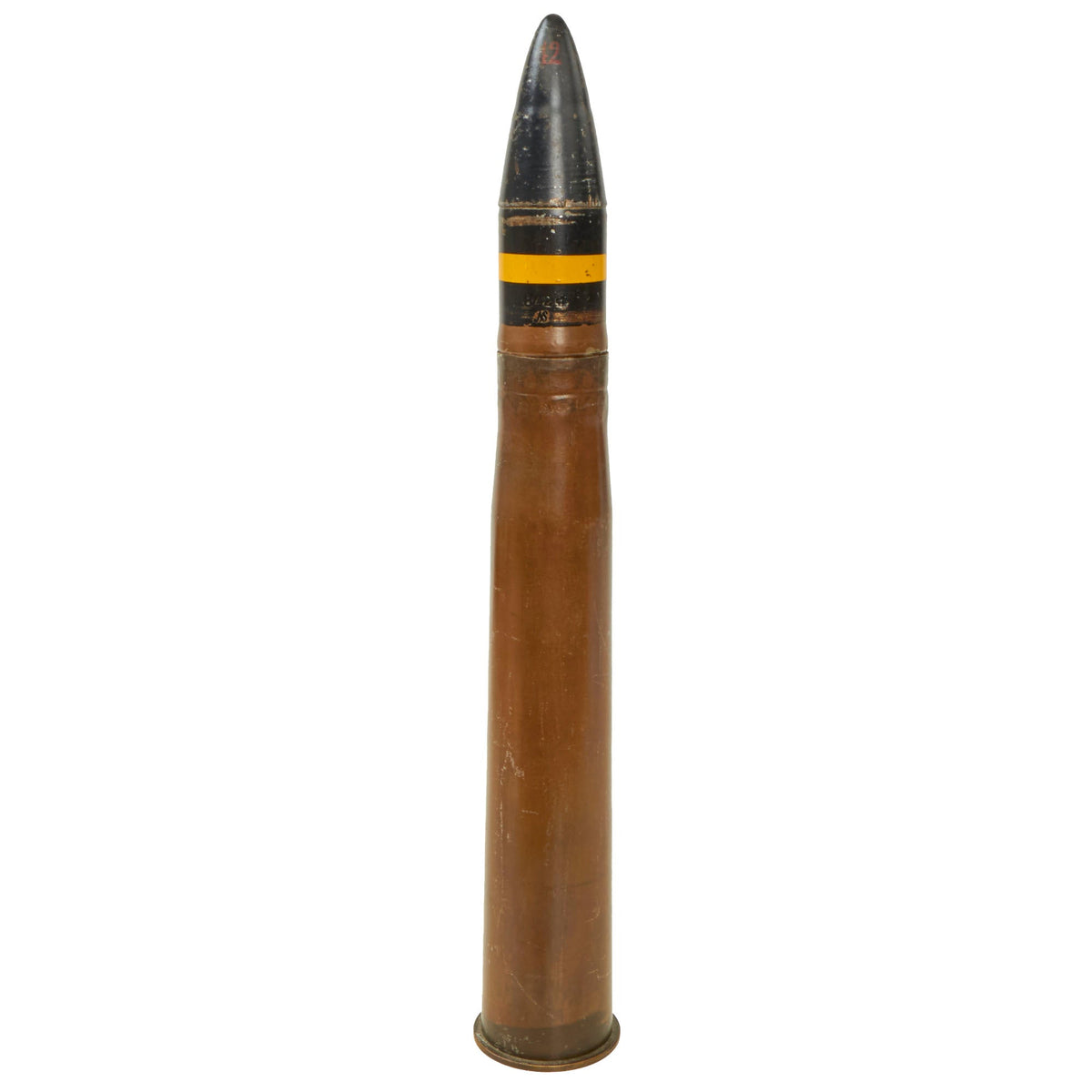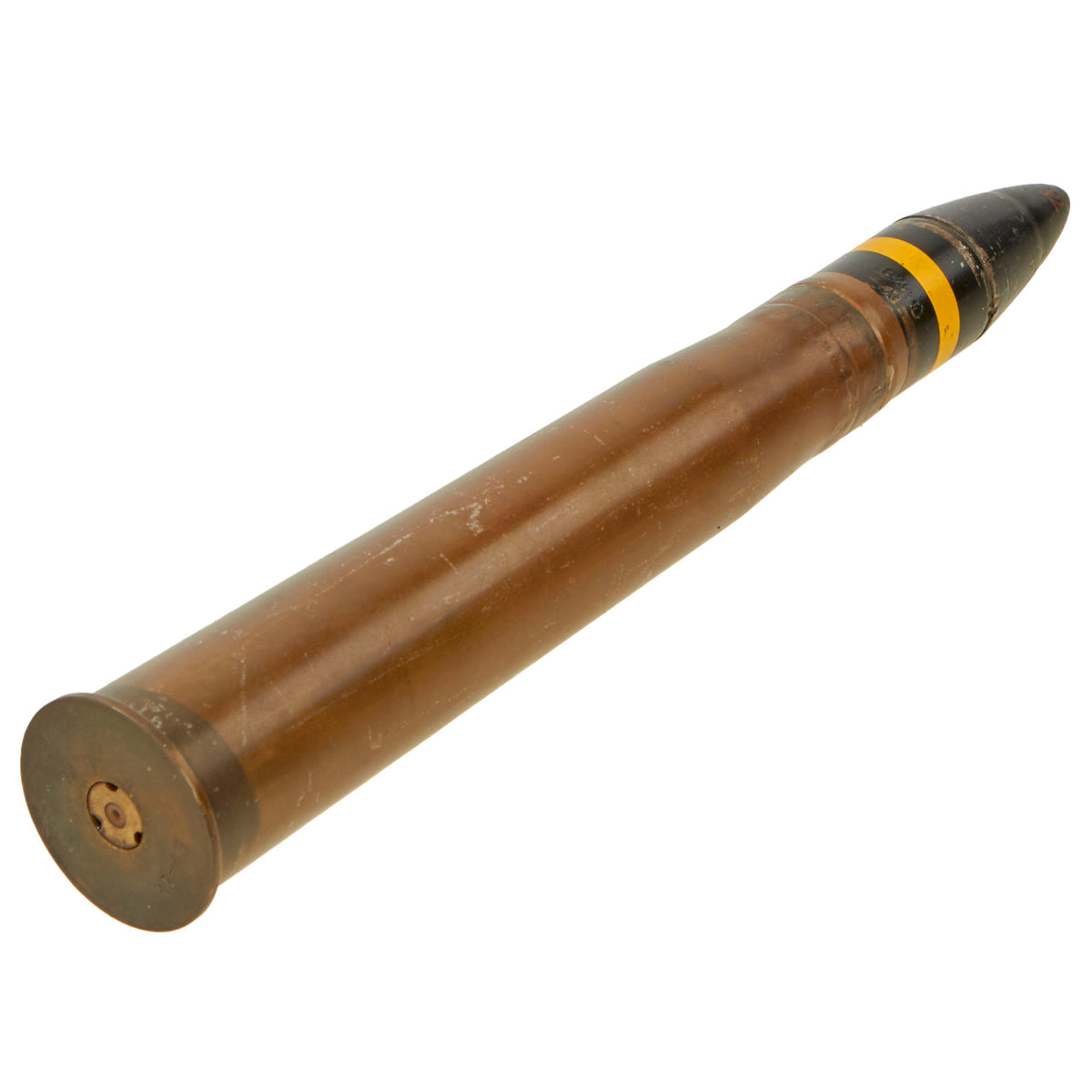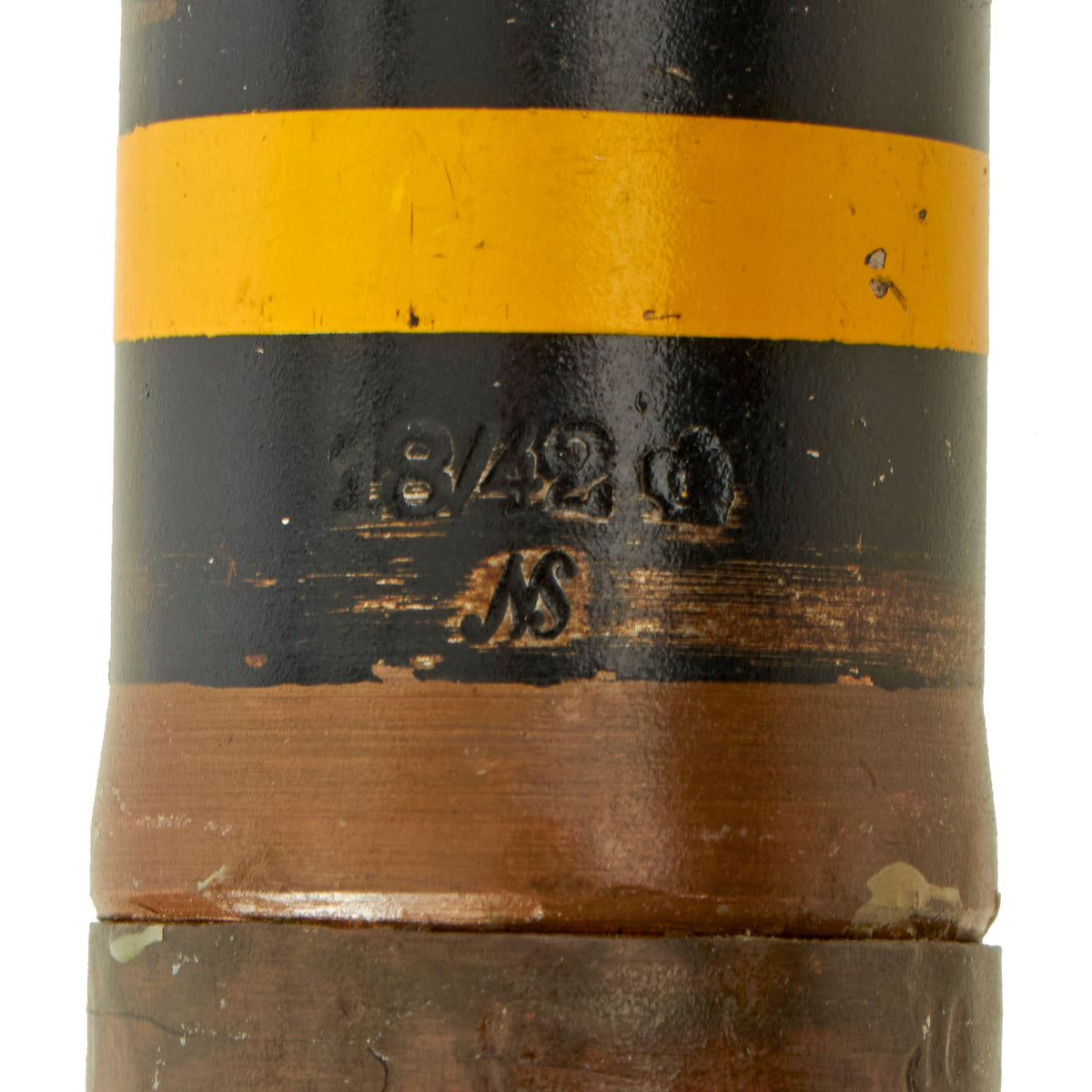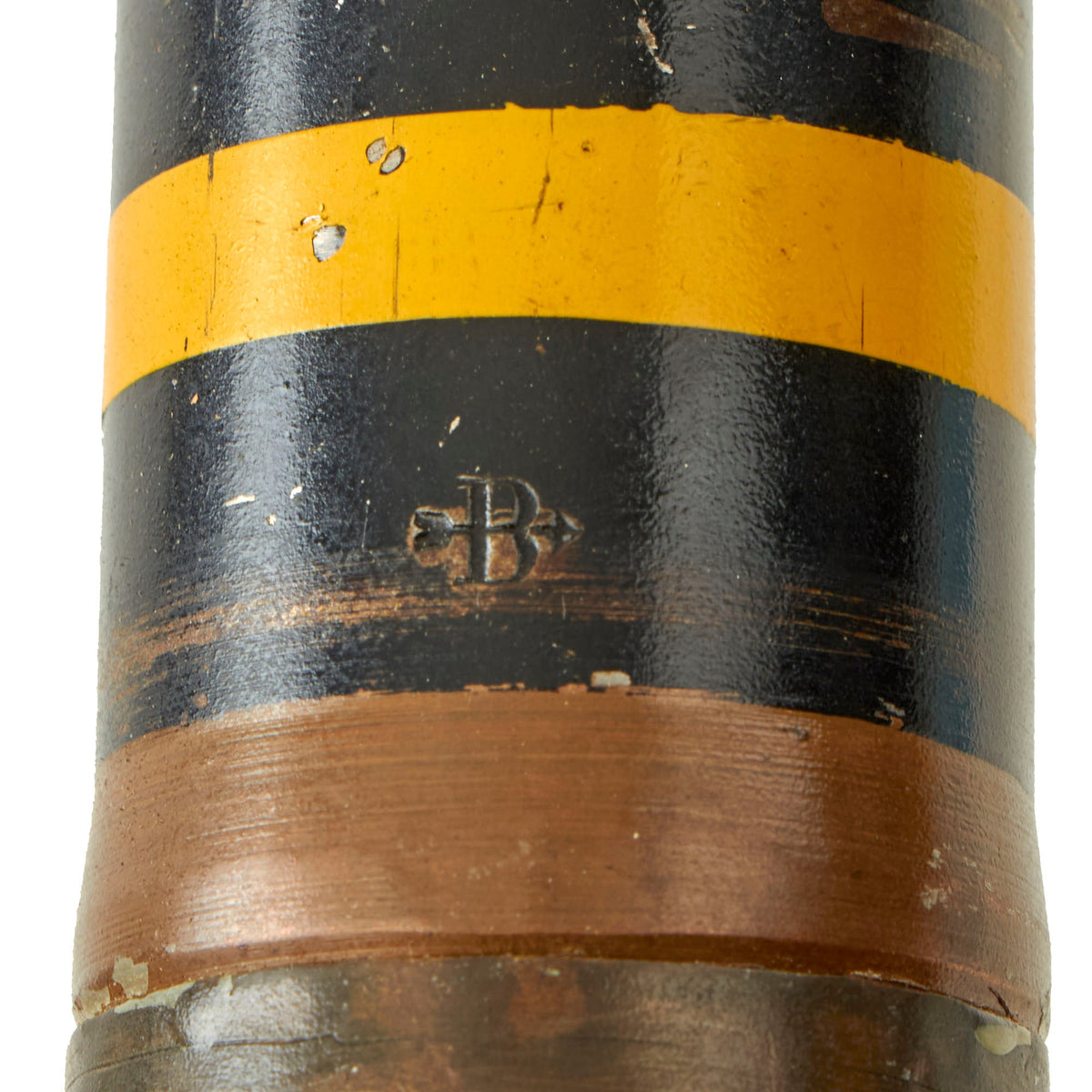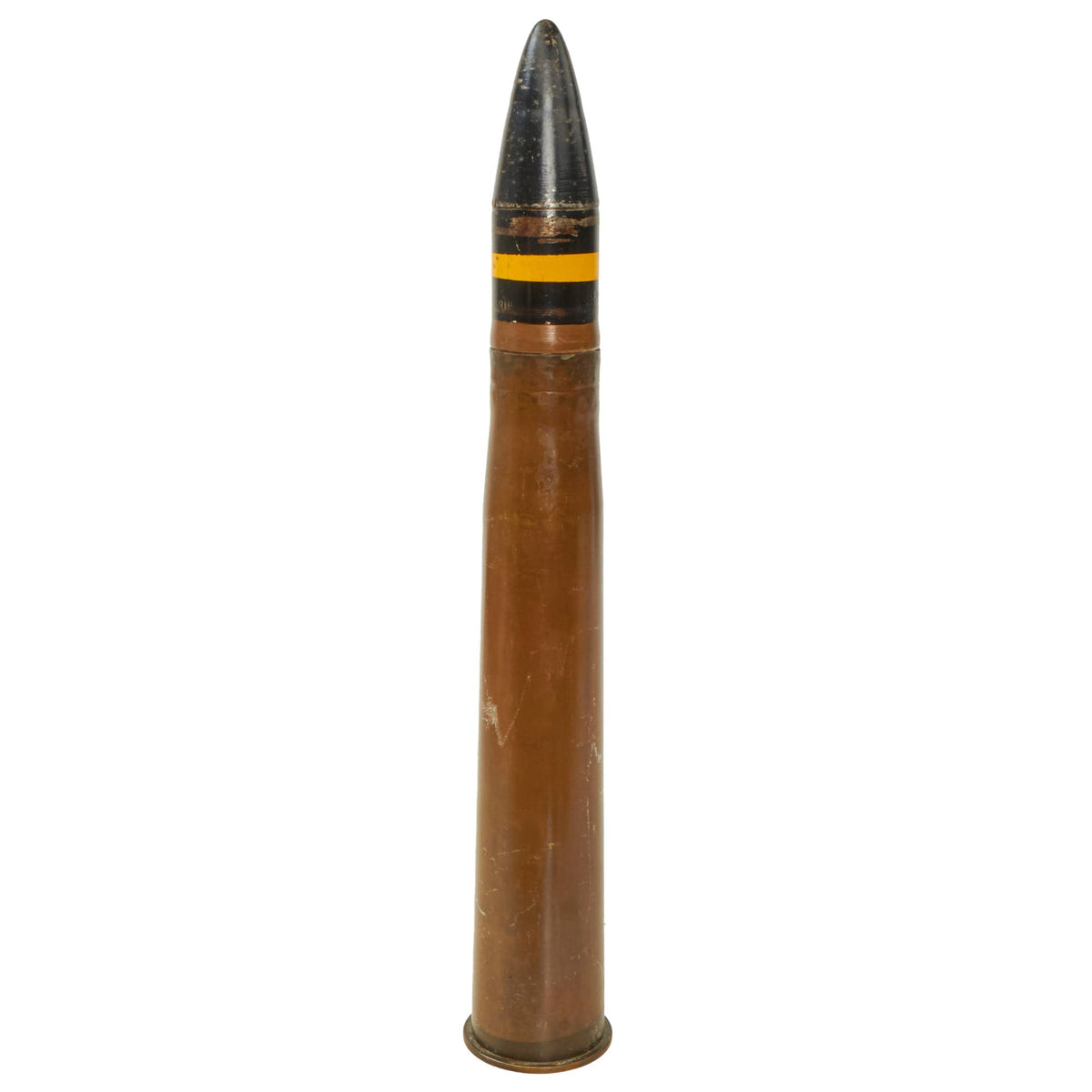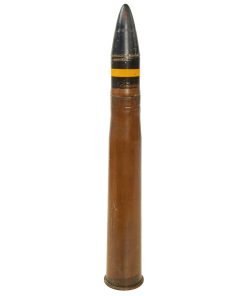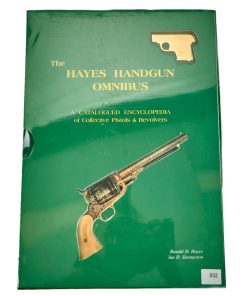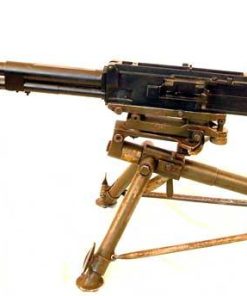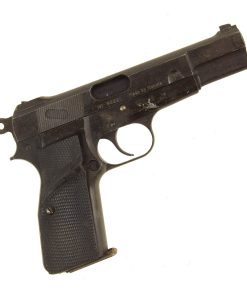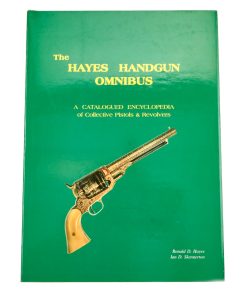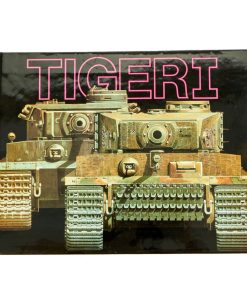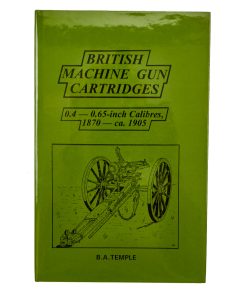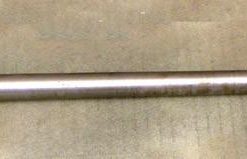Original Finnish WWII Inert 37mm Armor Piercing Round for the 37 PstK/36 – Swedish Made Original Items
$ 395,00 $ 118,50
Original Item. Only One Available. This is a very scarce WWII Finnish anti-tank round used in the 37 PstK/36, which was use in the Winter War and World War II. Like all deactivated ordnance, this round is Not Available for Export.
Finland operated the Bofors 37 mm anti-tank gun as the 37 PstK/36. 114 pieces were bought from Bofors in 1938–39 (some of them were returned to Sweden in 1940), 42 Polish-made guns were received from Germans in 1940–41 and 355 were produced by local manufacturers Tampella and VTT (Valtion Tykkitehdas – State Artillery Factory) in 1939–41. When the Winter War began in November 1939, the Finnish Army had 98 guns of the type. A tank version was also used to equip Finnish 6-tonne tanks. The gun remained in the Finnish Army inventory listings until 1986.
The round measures roughly 14 ½” tall and is marked in several places. It’s marked 18/42 (crown) over NS on the projectile. The bottom of the shell is marked 12-43 for a production date of December 1943.
This is a very scarce round to a very well-known Finnish anti-tank gun, ready for further research and display.
The Bofors 37 mm anti-tank gun was an anti-tank gun designed by Swedish manufacturer Bofors in the early 1930s originally for Swedish use. It was exported to several countries during the 1930s of which several bought licences to produce it themselves. The gun was used in several conflicts but most of its fame comes from its use in the Spanish Civil War and the Winter War where it was used very successfully against light tanks and armored cars among other targets. Beyond its use as an infantry gun it was also used as the main armament in several armored cars and tanks such as the Dutch M39 Pantserwagen and the Polish 7TP to name a few. As the armor of tanks was increased during World War II the gun very quickly became obsolete as an anti-tank gun but was still used effectively as an infantry support gun for the entirety of the war, and well into the Cold War. This was due to its high fire rate, great mobility and effective high explosive shells.
The gun was initially designed by Swedish manufacturer Bofors, mainly for export purposes. It was likely derived from Rheinmetall’s 3,7-cm Tak, the predecessor of 3.7 cm Pak 36. The first prototype was built in 1932; the development process continued until 1934. The Netherlands were the first to purchase the gun (order for 12 pieces was placed in 1935) and were followed by many other countries. Licensed copies were produced in Denmark, Finland, the Netherlands and Poland.
The barrel was of monobloc type, with semi-automatic vertical sliding breech block and small muzzle brake. It was mounted on a split trail carriage which had suspension and metal wheels with rubber tires. To give the crew some protection from firearms and shell fragments, the gun was equipped with a 5 mm thick shield, with a folding lower plate.
Fast Shipping with Professional Packaging
Thanks to our longstanding association with UPS FedEx DHL, and other major international carriers, we are able to provide a range of shipping options. Our warehouse staff is expertly trained and will wrap your products according to our exact and precise specifications. Prior to shipping, your goods will be thoroughly examined and securely secured. We ship to thousands clients each day across multiple countries. This shows how we're dedicated to be the largest retailer on the internet. Warehouses and distribution centres can be located throughout Europe as well as the USA.
Note: Orders with more than one item will be assigned a processing date depending on the item.
Before shipping before shipping, we'll conduct a thorough inspection of the items you have ordered. Today, the majority of orders will be delivered within 48 hours. The delivery time will be between 3-7 days.
Returns
The stock is dynamic and we cannot completely manage it because multiple stakeholders are involved, including our factory and warehouse. So the actual stock may alter at any time. It's possible that you may not receive your order once the order has been made.
Our policy is valid for a period of 30 days. If you don't receive the product within 30 days, we are not able to issue a refund or an exchange.
You can only return an item if it is unused and in the same state as the day you received it. You must have the item in its original packaging.
Related products
Uncategorized
Uncategorized
Uncategorized
Uncategorized
Band of Brothers ORIGINAL GERMAN WWII Le. F.H. 18 10.5cm ARTILLERY PIECE Original Items
Uncategorized
Uncategorized
Uncategorized
Uncategorized
Uncategorized
Angolan Rebel 1970s era 60mm Inert Display Mortar from Angolan Civil War Original Items
Uncategorized
Uncategorized
Australian WWII Owen MK1 Machine Carbine SMG Custom Fabricated Replica with Sling Original Items
Uncategorized
Uncategorized
Uncategorized
